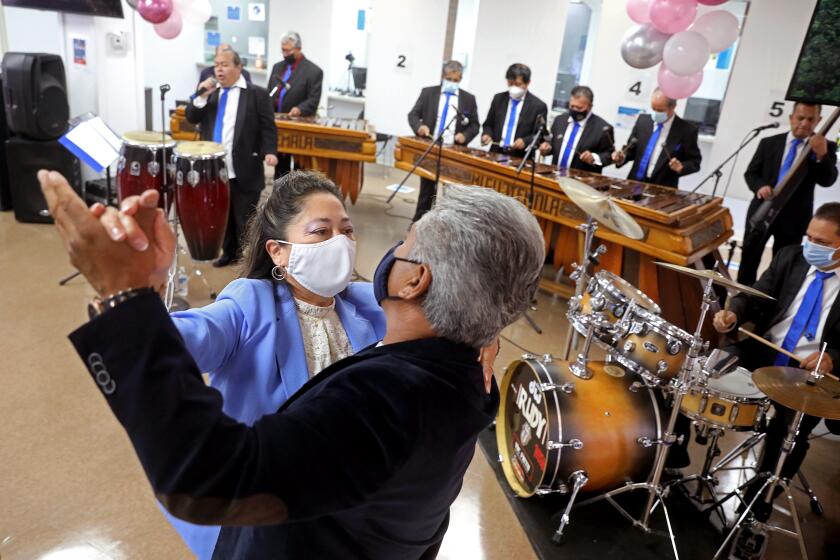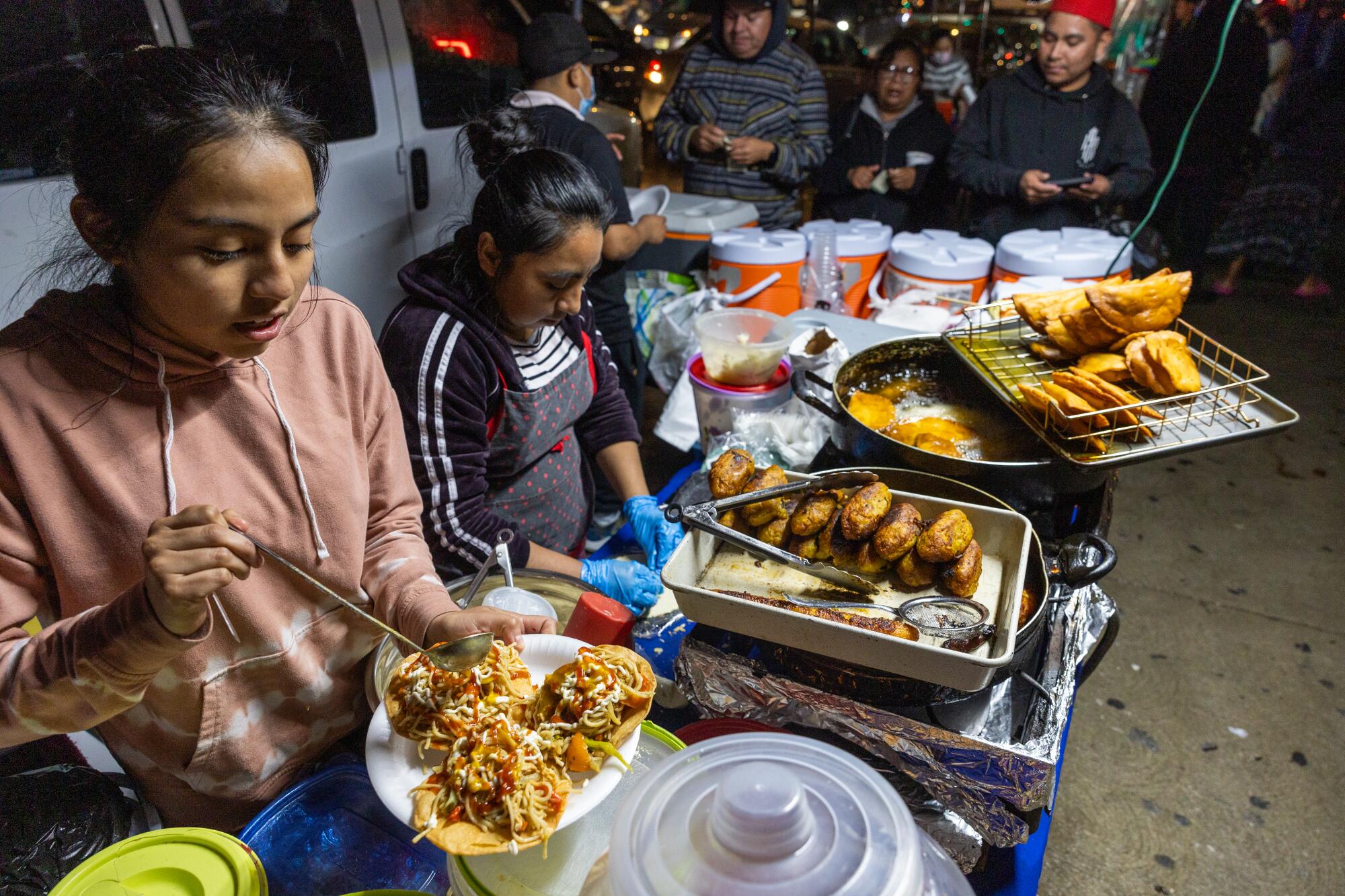
- Share via
Every morning, Julissa Corado rises with the sun to prepare her day’s worth of goods. By noon, she and her mom load their white van with soup-filled pots, orange Home Depot buckets and a cast-iron griddle to heat up tortillas.
Then, they head to a corner of Los Angeles that reminds them of their homeland: the intersection of South Bonnie Brae Street and 6th Street, Westlake’s Guatemalan night market.
The market, a cultural hot spot for Guatemalans in Los Angeles, springs to life every evening alongside the sidewalk, where street vendors set up their stands with pop-up tents and wire shopping carts. Although some vendors still struggle to get permits, market regulars say measures taken by state and local authorities to enable sidewalk food vendors has helped build the community.

As customers walk by, they are greeted by the chorus of vendors whose offerings — an array of native Guatemalan dishes — roll off their tongues: “pepián de pollo, caldo de pata, chuchitos, tamales, rellenitos de plátano, garnachas.” That’s just to name a few.
For a moment, vendors and customers can picture themselves back home in the municipalities of Quetzaltenango, Flores or Mazatenango. They see the Westlake market as a place they’ve carved for themselves in L.A., which hosts the most Guatemalan expats of any city.
Corado has been working at the stand for four years while being mom to her young son, Nick. Adjusting to life in L.A. has been “strange,” Corado said, because it’s starkly different from Santa Elena, the town she called home in Guatemala. But the uneasiness washes off when she’s at the market.
“It feels like you’re in your homeland because it’s just like this,” said Corado, 25, as she rolled a ball of fresh masa in her hands. “There’s not much of a difference.”
The dishes at the market range from a $3 cup of champurrado to a $11 plate of carne asada with rice and beans. Cash only. Whatever food doesn’t sell oftentimes gets shared among the vendors, according to Tina Tunay, who runs her stand with daughter Yesenia and husband Diego.
Unlike Mexican tamales cooked in corn husk, Tunay’s Guatemalan version is bigger, wrapped in plantain leaves, and softer to eat. She also sells tostadas topped with chow mein, elote loco and rellenitos — plantains stuffed with refried black beans.

Tunay said her family has no resources to preserve their goods for the next day. One solution could be buying a lunch truck, but that can cost upwards of $25,000 — nearly two years worth of earnings.
Last year, Tunay said that she visited Sacramento with a group of street vendors to support Senate Bill 972, which makes it easier for vendors to obtain local health permits. Gov. Gavin Newsom signed the bill into law September 2022, and it took effect in 2023.
Before street vending was decriminalized in L.A., Tunay said the city used to come and throw away all her food. Nowadays street vending has gotten easier, though Tunay said permits can still be a hassle, especially without a city-approved truck.
Though Pollo Campero has dozens of outlets in the U.S., travelers returning from Central American bring loads of its fried chicken — a literal taste of home.
“At the moment, we keep working like this,” Tunay said. “We don’t have any other option.”
When the market began to form nearly eight years ago, it was nowhere near the Little Guatemala it is today, according to Glenda Rojas, one of the many women who runs her own stand. Initially, there were four vendors at the intersection, Rojas said. Now there are about 45.
“They’ve adapted to this little piece of land and how to go about maintaining it,” Rojas said of her fellow vendors, noting that she knows them all.
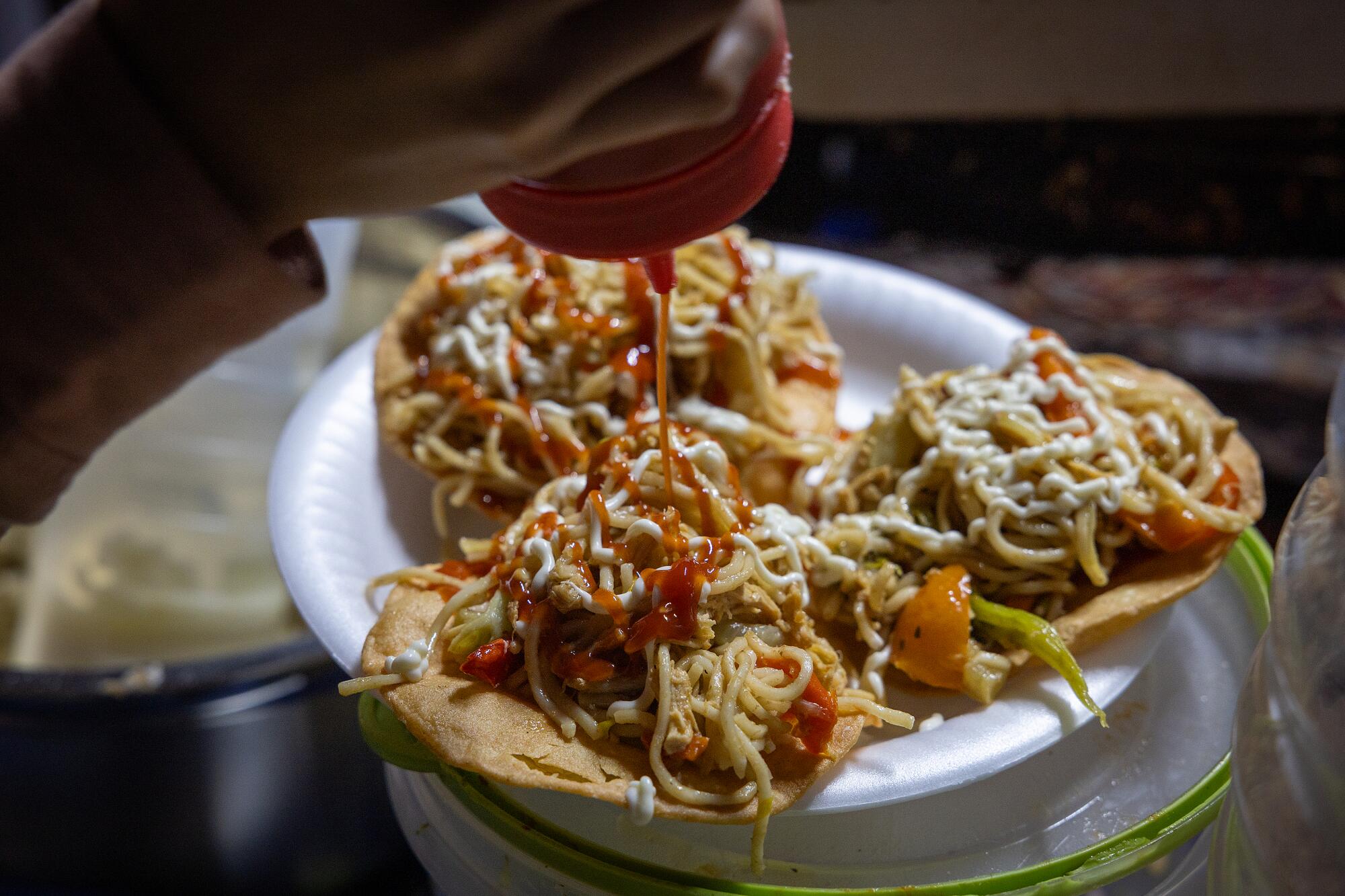
The vendors set their own schedules and prices, but there’s a code they respect among themselves: the division of territory on the sidewalk.
“Everyone has their designated space,” Rojas said in Spanish. “We can’t take a place that’s not ours. Everyone knows where to go.”
A Westlake resident, she has no plans to take her business elsewhere.
A marimba repairman came to rescue an aging instrument in Guatemala’s Los Angeles consulate. “I wanted to give it life again,” he said.
“I got accustomed to here,” Rojas said. “I didn’t go anywhere else, so we’re staying here. We all form a community here.”
She added, “I’ve visited other states and nothing is compared to this place.”
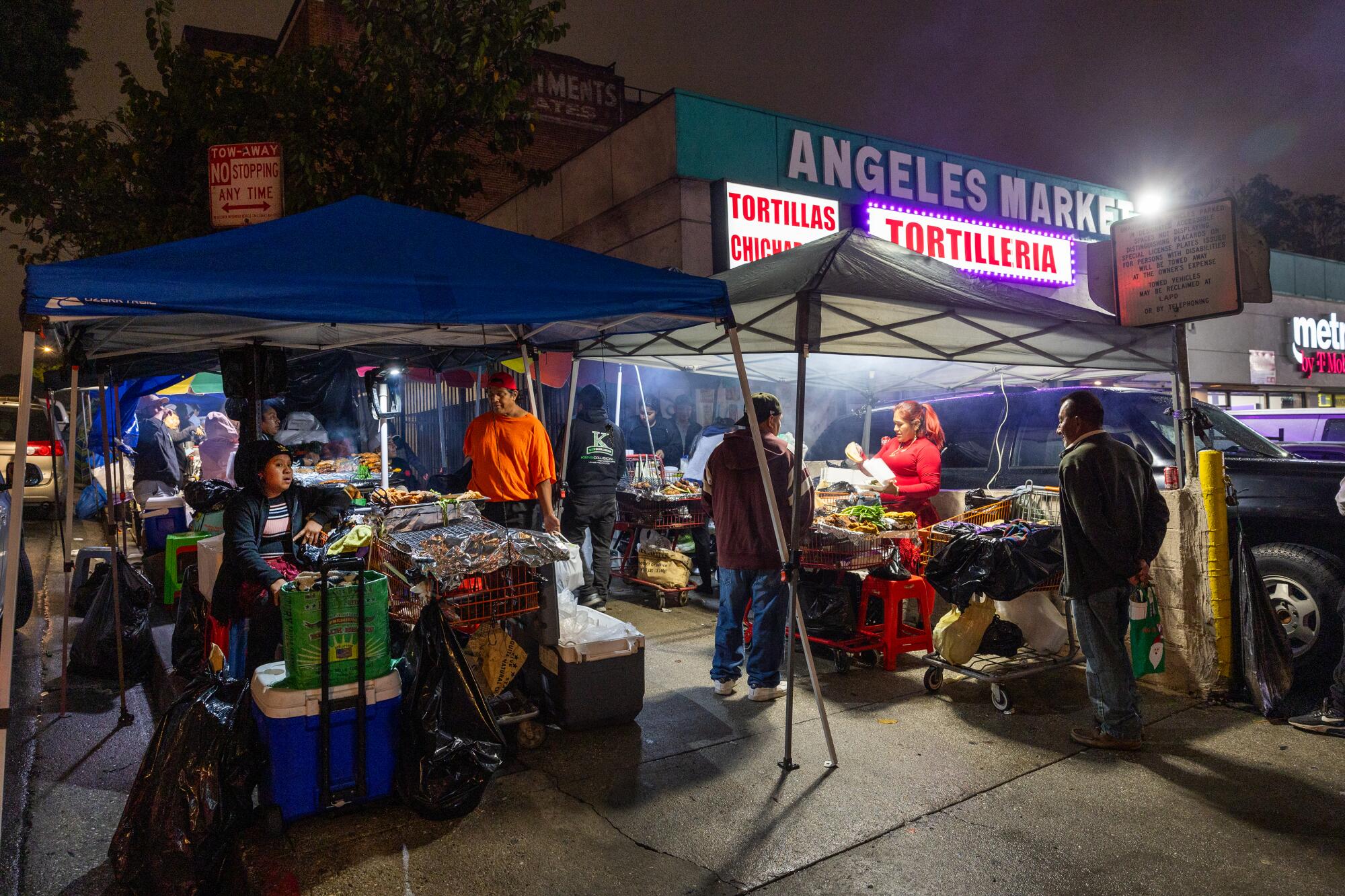
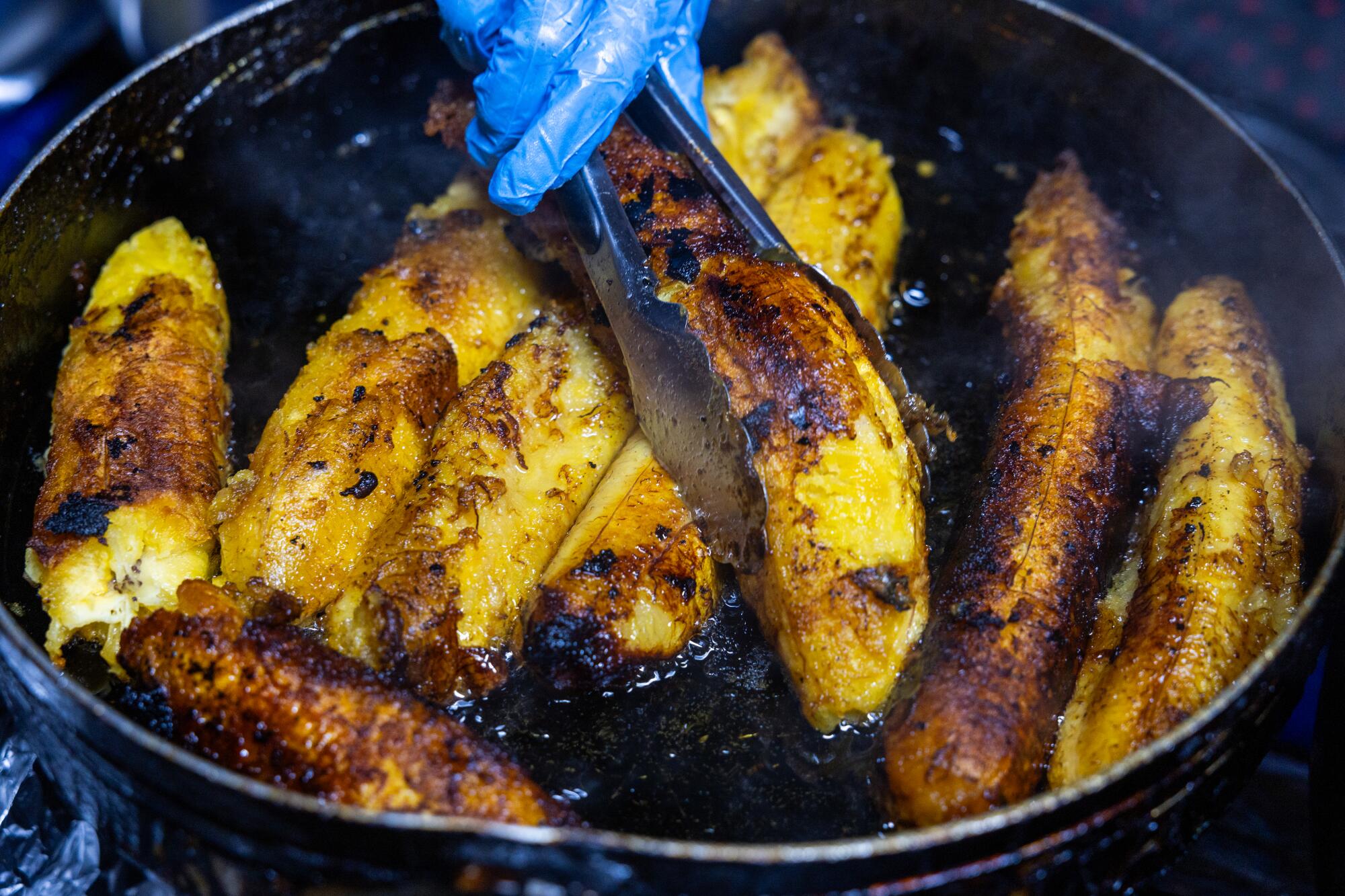
Maria Hernandez, 40, who sells tortas south of the intersection, said the need for more space can cause tension. She showed surveillance footage of a fight that broke out a month ago, though most vendors in general say people are respectful of each other.
“We know to be grateful,” Hernandez said. “We don’t pay rent, which helps. Right now, from my perspective, everything appears OK. I can make indigenous dishes from my country. The only problem is when people arrive to create more violence.”
Hernandez, who has lived in L.A. for 18 years, continues to run her business out of “necesidad,” necessity, she said.
Almost everyone who frequents the market are Chapines, a popular colloquialism used to refer to someone of Guatemalan descent. Some vendors sport shirts decorated with the outline of Guatemala’s border or wear clothing woven with the colorful patterns of Mayan textiles.
The resplendent quetzal, the national bird of Guatemala, is spotted on hats, soccer jerseys or sweaters, which are emblazoned with the Chapinismos, “¿Qué Onda Vos?” or “¡Púchica!”

On a recent weekday, one of the only non-Guatemalans was Maritza Ramirez of Honduras, who helps Rojas run her stand. As she flipped a piece of chuleta adobada — grilled pork chops marinated in a mix of chili seasoning — on a makeshift grill, Ramirez explained she has worked at the market everyday since Rojas offered her a job.
“And now we’ve converted her into a Chapina,” joked Lucrecia Batz, who is from Guatemala’s Suchitepéquez department. Battz, who also works with Rojas, said she uses her earnings to pay her rent and put her three children through school.
In addition to chuletas adobada, Rojas’ stand sells envueltas — either meat or vegetables wrapped in egg batter — fried mojarra fish and fresh tortillas.
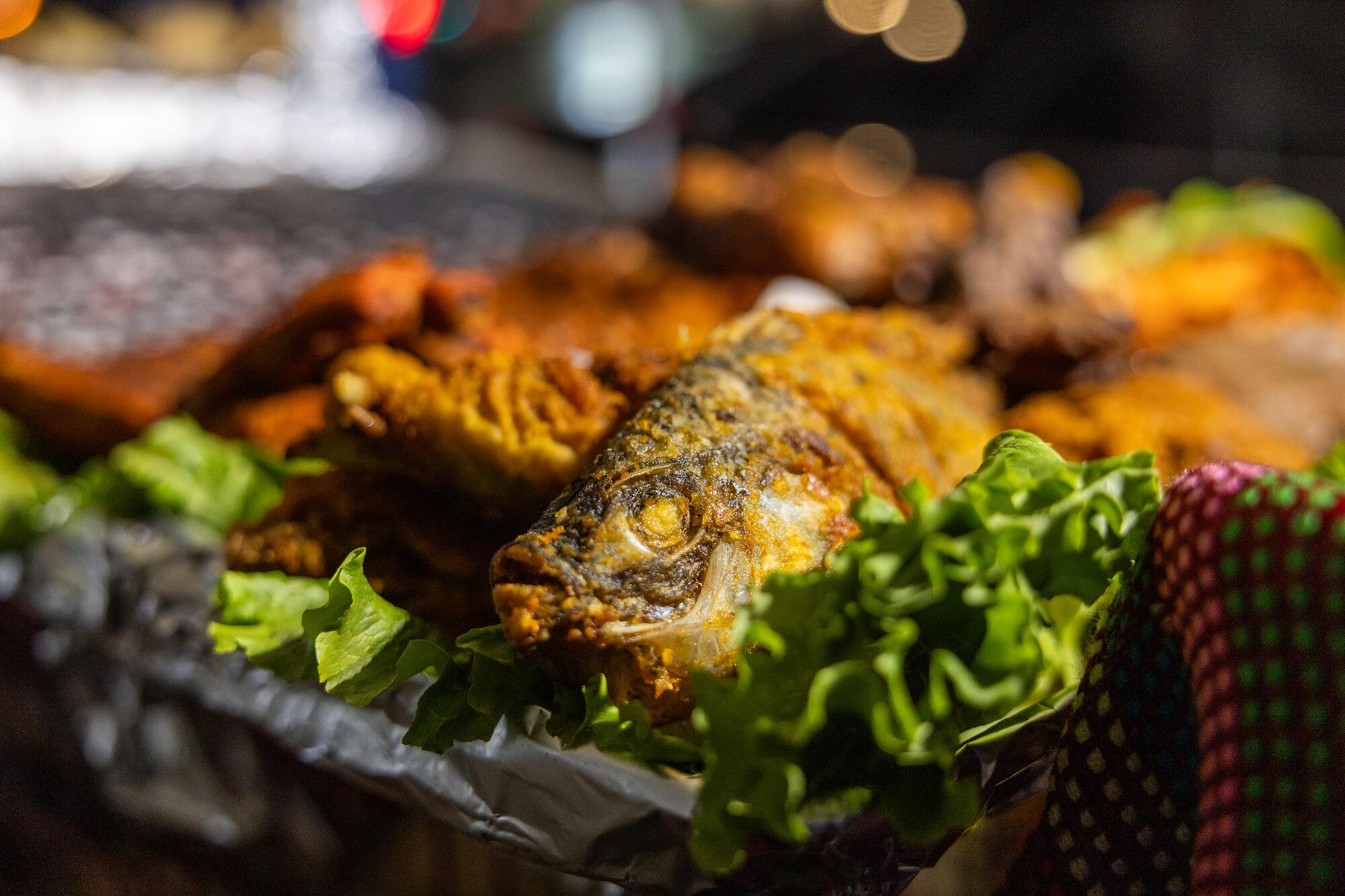
Waiting in line at the stand next to them was Reina Camil and her husband Tomás, who, for the past year, have repeatedly made the one-hour drive from Anaheim to visit the market.
“I like the native food and seeing everyone here. I can have a little fun and decompress after work,” said Reina, who carried her three-month-old son Tomás Jr. in a sling wrapped around her chest. Peering from within the fabric, Tomás Jr. did not make a fuss as his mom picked up her order of mixed meats.
Susana Chun, another customer, said the market has become her go-to spot for authentic food.
“If I want something from Guatemala,” she said, “I’ll come here.”
Corado and others say their clientele includes people from all over Latin America. Even Americans come to eat, except it can be “a little hard to understand” their English, Corado said with a laugh.
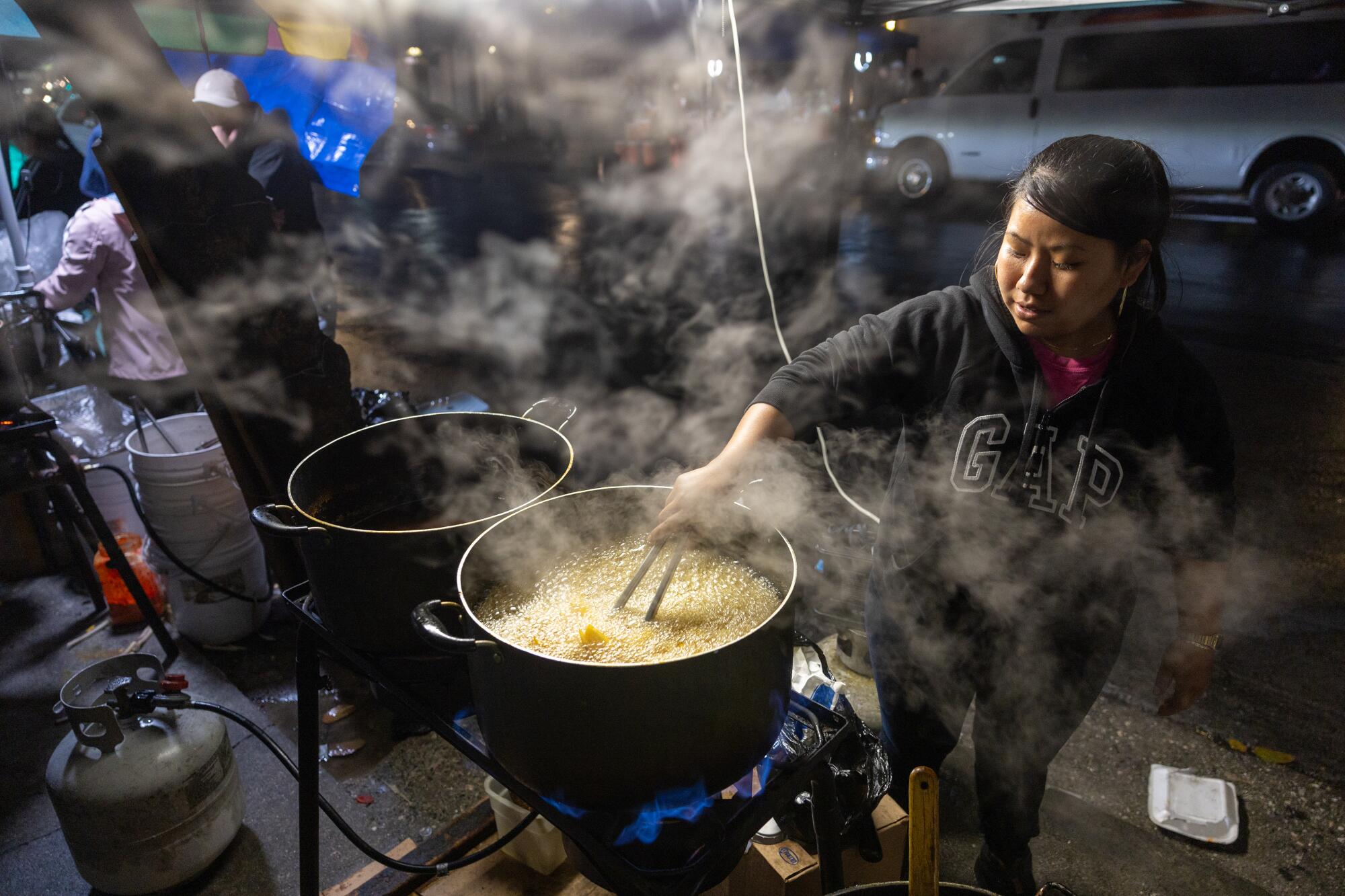
Angelica Ortiz, 19, said she’s also seen a wide variety of people come and go, including after Netflix featured the market on the “Street Food” docuseries. The food reminds her of her country, Ortiz said. Plus, she said it’s better than the food you’ll find in a restaurant and “más barato” — cheaper.
By 11 p.m., the vendors pack up their tents, LED lights, rainbow-colored umbrellas and folding tables, turning Little Guatemala back into any other intersection. That’s until they come back the next day, ready to create a piece of home.
More to Read
Sign up for Essential California
The most important California stories and recommendations in your inbox every morning.
You may occasionally receive promotional content from the Los Angeles Times.

